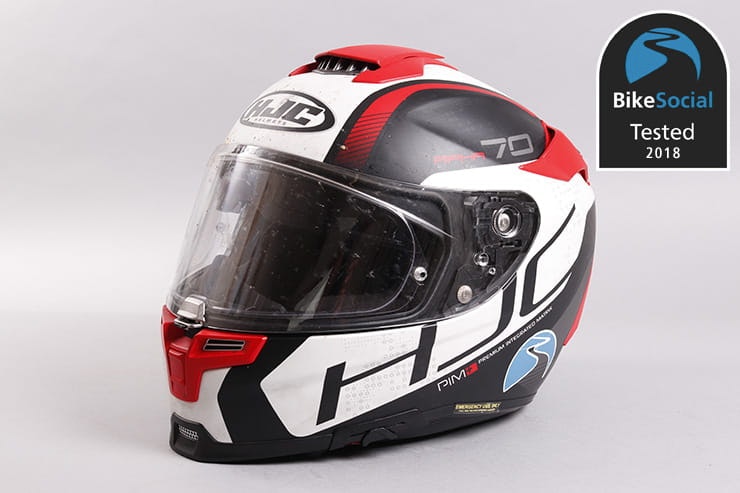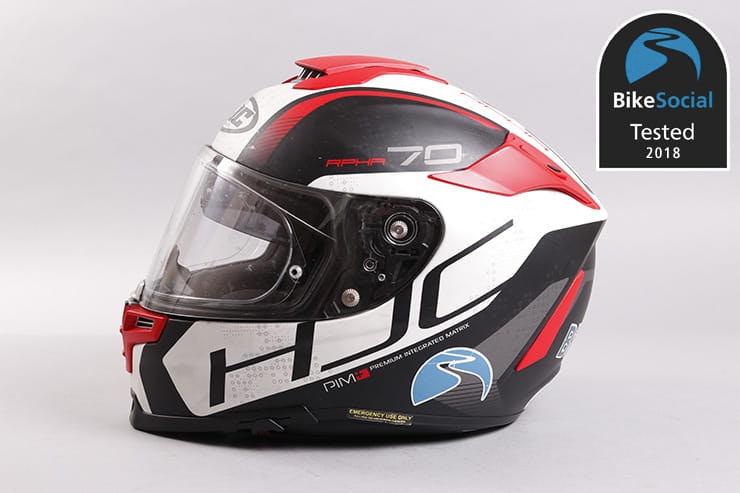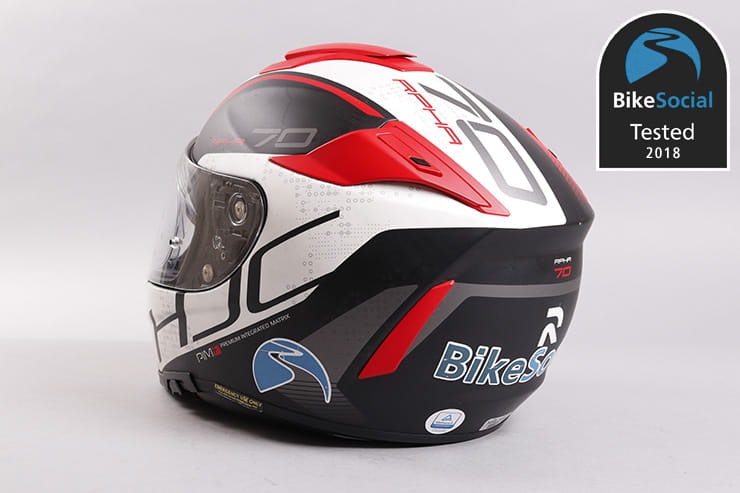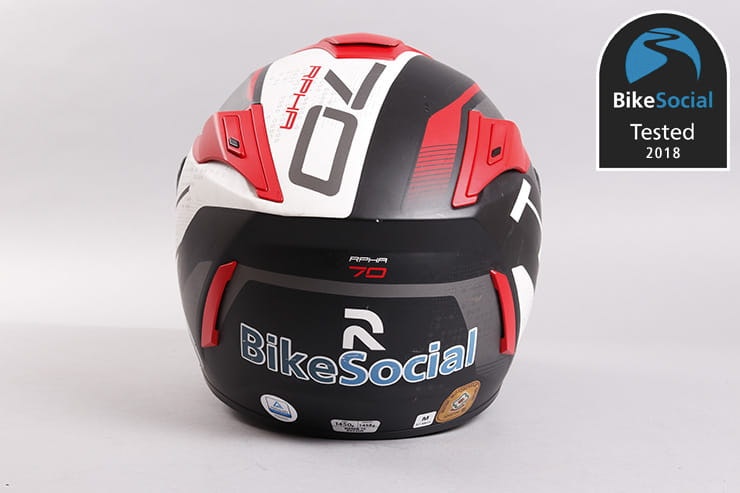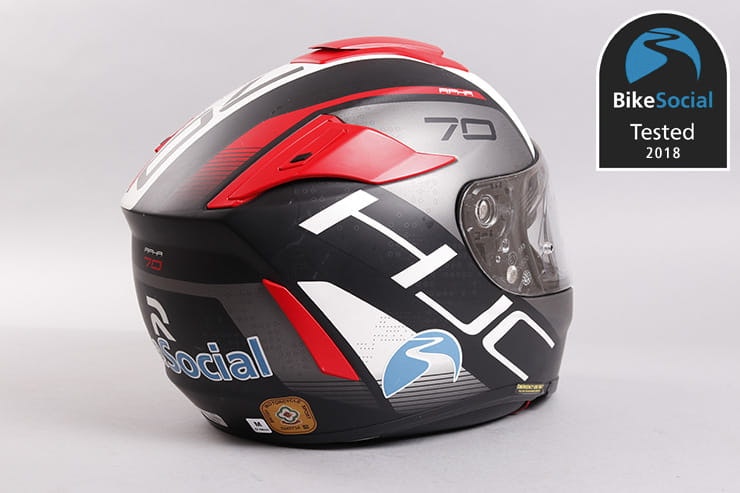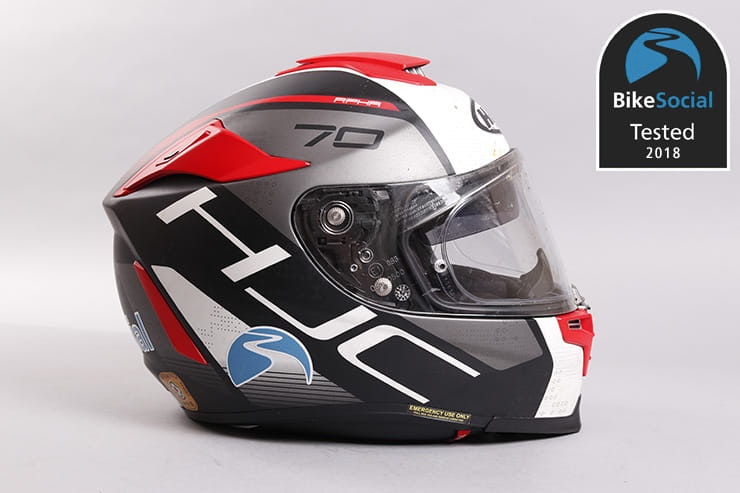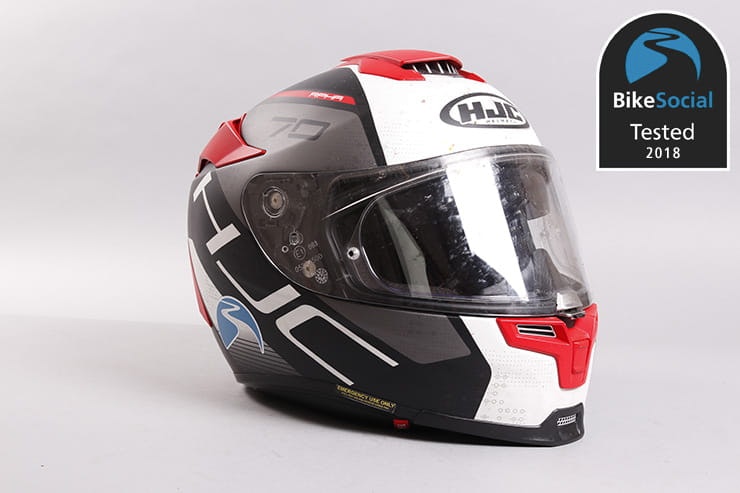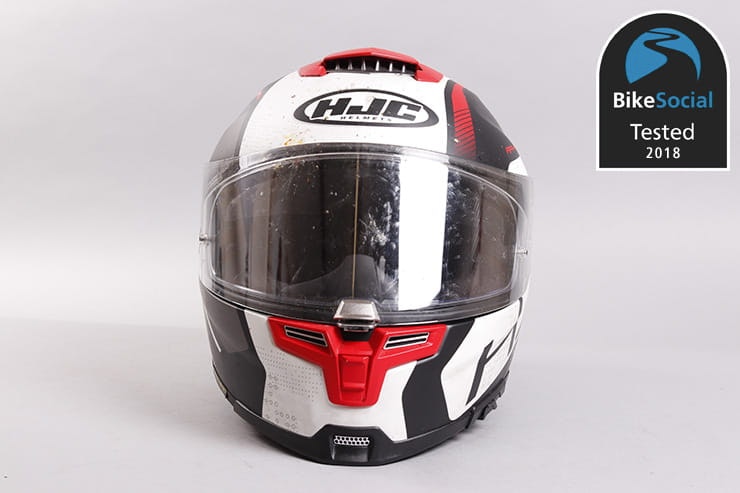Tested: HJC RPHA 70 motorcycle helmet review
By Simon Hancocks
Motorcycle Journalist
11.09.2018
Date reviewed: August 2018 | Tested by: Simon Hancocks | Price: £349.99 | www.oxfordproducts.com
I’ve been using the HJC for about two months now, on my long-term test Ducati Multistrada 1260S and also a Ducati Panigale 959 Corse, covering my 70 mile commute and also for a tour of France and Italy on my way to World Ducati Week 2018.
Primarily designed as a sports touring lid, the RPHA 70 is made in such a way that riding a head-down sportsbike is still possible for three hours or more, making it a versatile bit of kit.
Outer shell
The outer shell of the RPHA 70 is made of carbon-fibre, aramid and a carbon-glass composite construction.
The matt finish and perfectly-applied decals make for an extremely good-looking helmet that, while it isn’t shouty, does get your attention. The shape is not as aggressive as a sports or track-day helmet, but it still has a small spoiler mounted on the rear to aid head-down aerodynamics.
There are three shell sizes covering sizes from XXS up to XXL.
Weight
Weighing in at 1485g, the RPHA 70 is slightly heavier than lightweight Shoei NXR, which comes in at a 1310g. It’s slightly lighter though than my last long-term lid, the Arai Chaser-X, which weighed 1530g.
Ventilation
There are three sets of open and closeable vents on the RPHA 70; one large one on the top, two on the front and two independently closeable exhaust vents on the rear.
The large top vent is extremely easy to find and use when on the move as you open it by placing your hand on the entire vent and sliding the housing forward to close, and backwards to open. It’s very effective when riding my Multistrada 1260S – far more effective than the top vent on my previous Arai ChaserX. Due to the vent’s size and the volume of air it moves it does make quite a noise – when open and closed – although I always wear plugs. which means this is noticeable but not annoying.
The slider to operate the front vent is much smaller, harder to find and less effective. There is also a button on the interior of the chin-bar that either directs air to your mouth or up to the visor to prevent misting. It’s hard to notice any air passing through the chin bar, regardless of which way you direct the air and as the visor has never fogged on me – see below – I’ve found it unnecessary to offer this complication.
The two rear-mounted exhaust vents are fairly small, although they are easy to find. As with most helmets exhaust vents I’ve tried, I found little benefit and generally left them open all the time.
Visor
The quick-release visor of the HJC is very easy to remove and replace making cleaning a doddle. There are two small levers on either side of the lid that if you press firmly, and the lid is in the open position, the visor should pop out.
The aperture of the HJC is wide and overall forward and peripheral vision is excellent, the only downside being the large rubber breath guard slightly obscuring my view of the dash.
The RPHA 70 comes with HJC’s own anti-fog visor insert called Skipfog. It’s designed for the lid and is fitted in seconds giving a clear view with no distortion. I was really surprised by how well the insert works, seeming to perform as well as the industry-standard Pinlock in my opinion, despite having a hard bead on the edge rather than the soft silicone of a Pinlock. Even riding on a rainy and humid Italian morning coming back from World Ducati Week, absolutely zero fogging occurred, even with vents closed to keep out the rain.
Lining
The lining of the HJC is soft and plush, and it really does wick sweat away from your face well. It also dries out extremely quickly, which was helpful when riding in the 35°C heat; after a 20 minute rest stop the interior of the lid was dry, comfortable and ready for more miles.
The lining is completely removable in a couple of minutes and is washable. The straps are also lined in the same soft material, although they do have a tendency to bunch up if you put the lid on in a hurry. I didn’t tend to notice right away but after about an hour of riding they’d start to make my chin ache, forcing me to pull over and sort them out. Once you know what’s happening, it’s easy to adjust them as you put the lid on, to avoid any discomfort.
Fastening
Keeping the helmet secure is a double D-ring fastener and popper for the excess strap. It’s my preferred method of fastening a helmet, so am happy with the way the system works. Just know that you can’t easily use this system with gloves on.
Fit
Initially I found the lid tight to put on – it felt like I really had to pull the chin straps out to get the helmet over my head – but with time the lining has softened and moulded to the shape of my head, making it extremely comfy. On the trip to World Ducati Week I was wearing it for about nine hours, and never had any issues with headaches, neck-ache or discomfort.
Noise
As with all lids, ear-plugs are a must, but on a couple of occasions I did ride without and found the lid quite noisy but not uncomfortable; looking at the size of the top-vent it’s not surprising – the air scoop is about two inches wide and protrudes about 15mm from the outer shell.
That said, with earplugs in I found the helmet to be comfortable on motorways cruising at 80mph for nine hours or more.
Conclusion
It’s not often I’m genuinely surprised by a product, but the HJC RPHA 70 has done just that. I’d always considered the brand to be a budget option – sorry HJC – but the RPHA 70 is a very well-designed lid that’s actually comfier and lighter than my Arai.
The small front chin vent is a niggle, but the top vent is so good it’s almost redundant anyway. Yes, it’s slightly noisier than my Arai, but with ’plugs in, I’d never know.
If you’re looking for a helmet for touring, sportsbike riding and track-days, you could pay a lot more from some of the more established names and get a lot less performance, comfort and style than is offered by the HJC RPHA 70.
